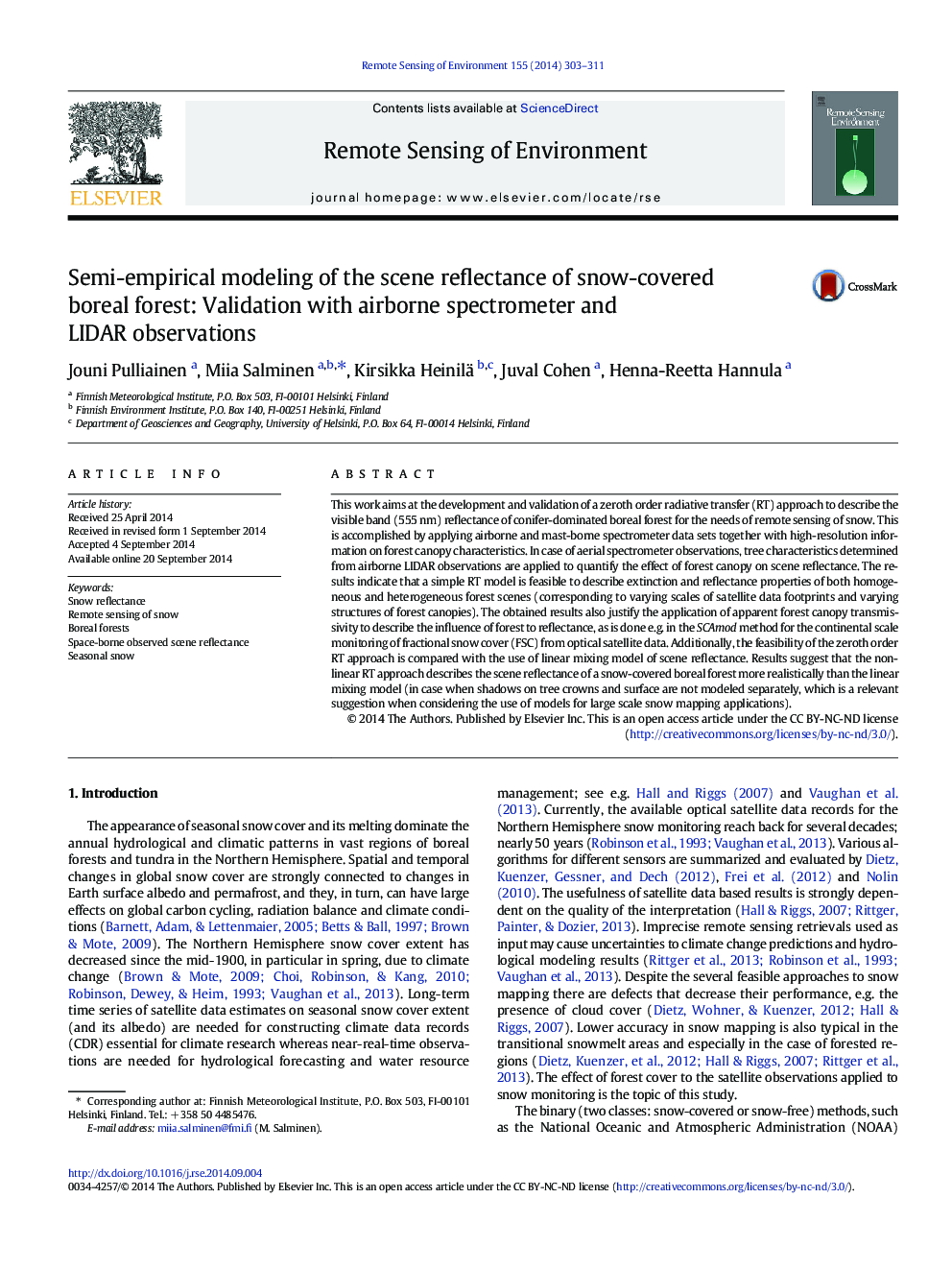| Article ID | Journal | Published Year | Pages | File Type |
|---|---|---|---|---|
| 6346622 | Remote Sensing of Environment | 2014 | 9 Pages |
Abstract
This work aims at the development and validation of a zeroth order radiative transfer (RT) approach to describe the visible band (555Â nm) reflectance of conifer-dominated boreal forest for the needs of remote sensing of snow. This is accomplished by applying airborne and mast-borne spectrometer data sets together with high-resolution information on forest canopy characteristics. In case of aerial spectrometer observations, tree characteristics determined from airborne LIDAR observations are applied to quantify the effect of forest canopy on scene reflectance. The results indicate that a simple RT model is feasible to describe extinction and reflectance properties of both homogeneous and heterogeneous forest scenes (corresponding to varying scales of satellite data footprints and varying structures of forest canopies). The obtained results also justify the application of apparent forest canopy transmissivity to describe the influence of forest to reflectance, as is done e.g. in the SCAmod method for the continental scale monitoring of fractional snow cover (FSC) from optical satellite data. Additionally, the feasibility of the zeroth order RT approach is compared with the use of linear mixing model of scene reflectance. Results suggest that the non-linear RT approach describes the scene reflectance of a snow-covered boreal forest more realistically than the linear mixing model (in case when shadows on tree crowns and surface are not modeled separately, which is a relevant suggestion when considering the use of models for large scale snow mapping applications).
Related Topics
Physical Sciences and Engineering
Earth and Planetary Sciences
Computers in Earth Sciences
Authors
Jouni Pulliainen, Miia Salminen, Kirsikka Heinilä, Juval Cohen, Henna-Reetta Hannula,
